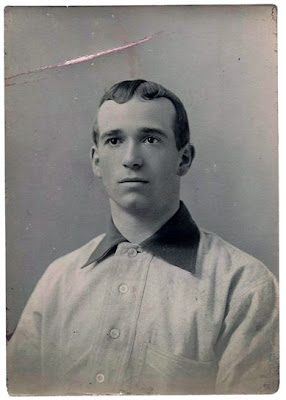Card front
The fact that Tommy lived to age 91 says something good about his habits—probably that he didn’t drink or smoke too much. It's hard to remember now that Prohibition (and its undoing) came about after a century of alcohol-related cultural tumult. By the early 1900s, plenty of folks considered booze an absolute evil and demonstrated in the streets to that effect. Without its influence (so claimed their rhetoric), the poor would be unshackled and we’d have little reason for prisons and reform schools. It’s enlightening to compare that language to any number of social issues today! (Temperance organizations eventually delivered the political pressure necessary to pass the 18th Constitutional Amendment, which lasted from 1920 to 1933.)
Card back
Value: I picked up this antique from eBay about four years ago for $225. Check out a Robert Edwards Auctions listing for the whole set to see more pictures, including the anachronistic apron-wearing Tip-Top Boy Mascot.
Fakes / reprints: The set's valuable enough to fake, so don't make it your first early 20th century purchase--research others from the era first and get familiar with how authentic paper and ink looks. Buying from a reputable dealer also helps.
UPDATED: Paragon Auctions posted the original studio shot for this Tommy Leach card and probably others from the same era. Note that Tip-Top's artist added PITTSBURGH to his otherwise unadorned uniform.











